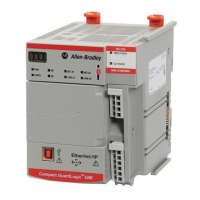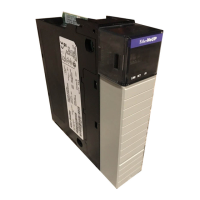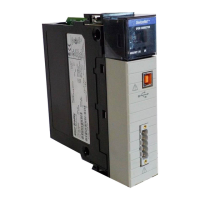Rockwell Automation Publication MOTION-RM003I-EN-P - February 2018 361
Homing Sequence Types Description
Active Unidirectional Home to
Switch
Unidirectional home is usually used when the physical axis cannot change directions.
This active homing sequence is useful when an encoder marker is not available and
either unidirectional motion is required or proximity switch is being used.
When this sequence is performed in the Active Homing Mode, the axis moves in the
specified Home Direction at the specified Home Speed and Home Acceleration until the
home switch is detected. If the Home Offset is zero, the Home Position is assigned to
the axis position at the moment that the limit switch is detected and the axis
decelerates to a stop at the specified Home Deceleration.
If Home Offset is non-zero, then the Home Position will be offset from the point where
the switch is detected by this value. The controller then continues to move the axis to
the Home Position at the specified Home Speed and Home Acceleration using a
trapezoidal move profile.
By setting
a Home Offset greater than the deceleration distance, unidirectional motion
to the Home Position is insured. However, if the Home Offset value is less than the
deceleration distance, then the axis is simply decelerated to a stop at the specified
Home Deceleration. The axis does not
reverse direction to move to the Home Position.
In this case, the PC-bit leg of the associated MAH instruction is not set when the IP-bit
leg is cleared.
In the case where this homing sequence is performed on a cyclic axis and the Home
Offset value is less than the deceleration distance when the home event is detected, the
control automatically adds one or more revolutions to the move distance. This
guarantees the resulting move to the Home Position is unidirectional.
Active Unidirectional Home to
Marker
This active homing sequence is useful for single turn rotary and linear encoder
applications when unidirectional motion is required.
When this sequence is performed in the Active Homing Mode, the axis moves in the
specified Home Direction at the specified Home Speed and Home Acceleration until the
marker is detected. If the Home Offset is zero, the Home Position is assigned to the axis
position at the moment that the marker is detected and the axis decelerates to a stop at
the specified Home Deceleration.
If Home Offset is non-
zero, then the Home Position will be offset from the point where
the marker was detected by this value. The controller then continues to move the axis
to the Home Position at the specified Home Speed and Home Acceleration using a
trapezoidal move profile.
The axis position is updated based on the Home Position and Home Offset. Even if the
Home Offset is zero, the position is updated. Zero is a valid number.
By setting a Home Offset greater than the deceleration distance, unidirectional motion
to the Home Position is insured. However, if the Home Offset value is less than the
deceleration distance, then the axis is simply decelerated to a stop at the specified
Home Deceleration. The axis does not reverse direction to move to the Home Position.
In this case, the PC-bit leg of the associated MAH instruction is not set when the IP-bit
leg is cleared.
In the case where this homing sequence is performed on a cyclic axis and the Home
Offset value is less than the dece
leration distance when the home event is detected, the
control automatically adds one or more revolutions to the move distance. This
guarantees the resulting move to the Home Position is unidirectional.
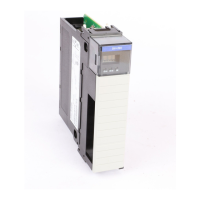
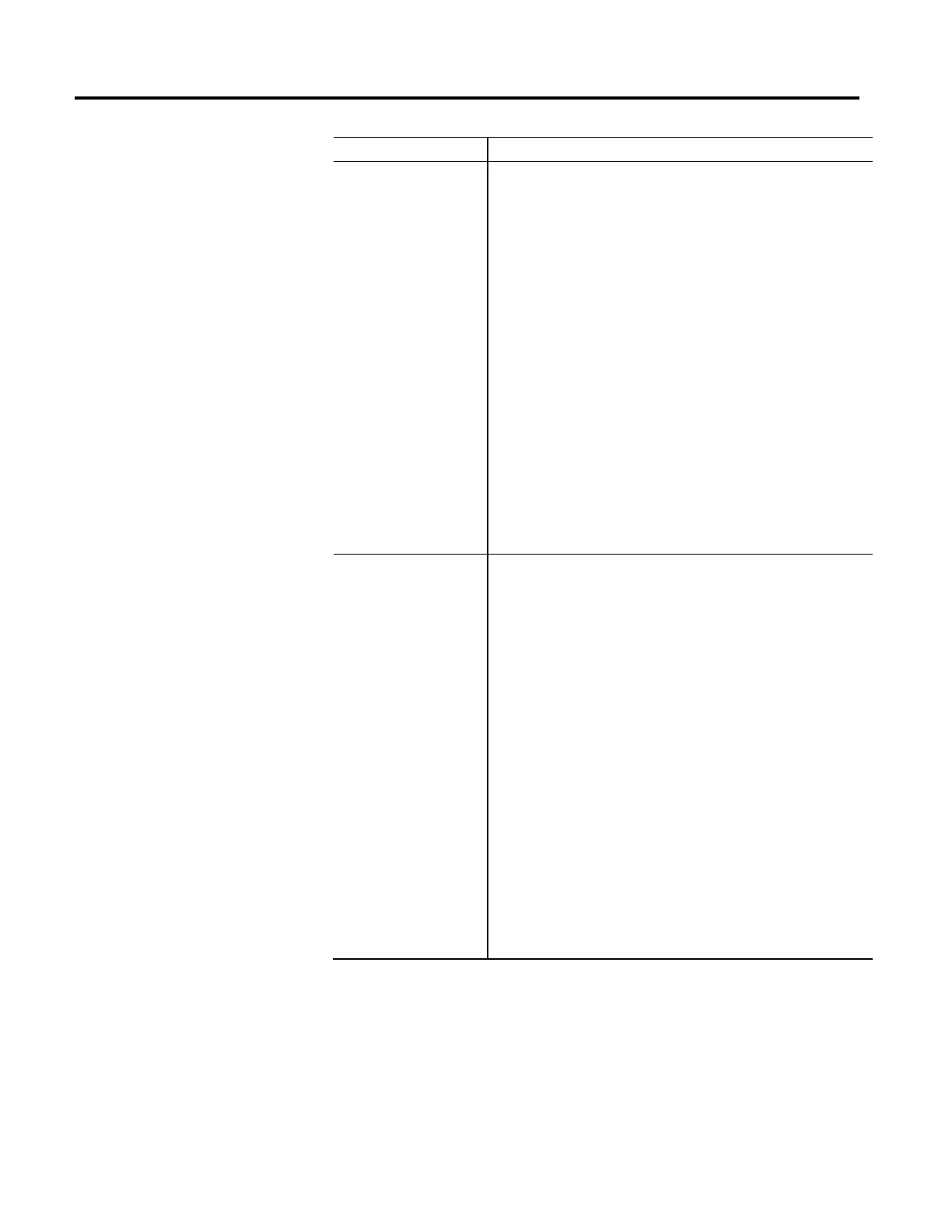